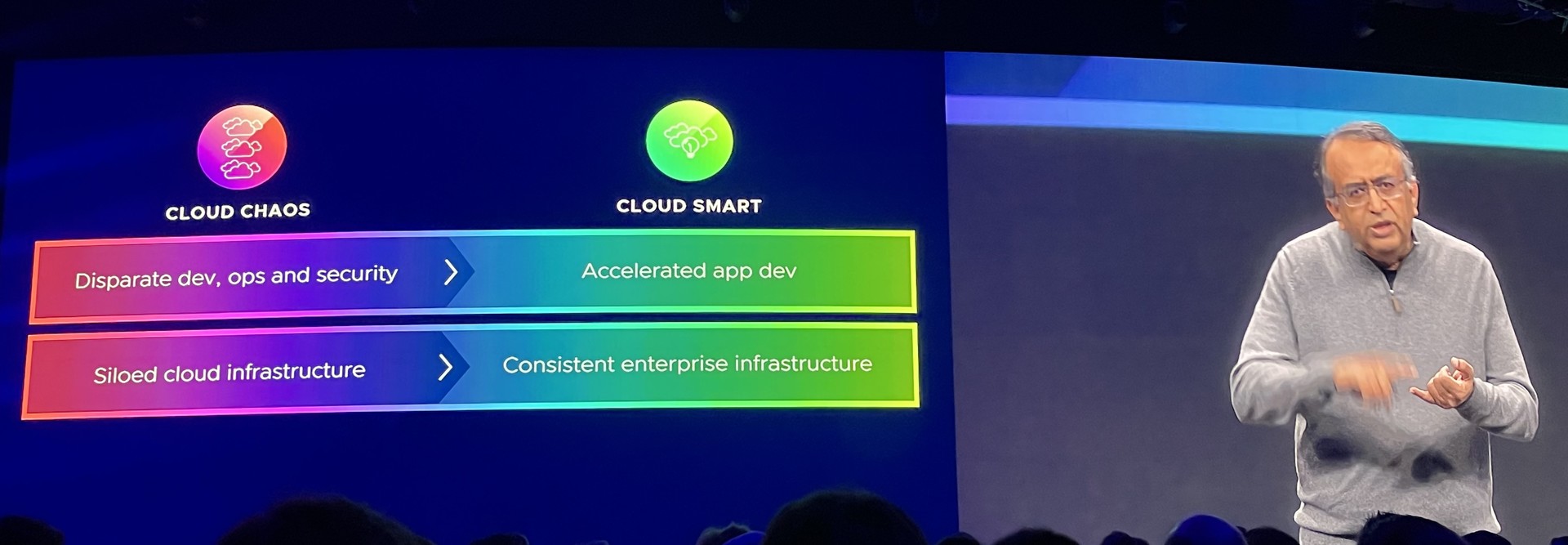The Multicloud Universe Is the Home of Digital Transformation
“Whether you're a born-in-the-cloud company or an established enterprise, all of you are running the same race. And that is a race to transform your businesses to become digitally smart,” Raghuram said. He identified three priorities being driven by IT leaders in that race: the acceleration of innovation; the next generation of automation using artificial intelligence and machine learning; and the next great leap in employee productivity. “This is what ‘digitally smart’ means,” he said.
Digital transformation is an ongoing journey, and Raghuram said he’s had many conversations with CIOs and CEOs who commonly respond that the process simply isn’t happening fast enough. He cited three common roadblocks to digital transformation, which he said are common across industries.
“The first one is the lack of skills; not just developer skills, but cloud skills, SRE [site reliability engineering] skills, platform skills. The second is the weight of all the enterprise applications that you’ve got to bring forward with you. And the third — because a lot of your teams are building applications on multiple clouds in the data center, following different models — there is no consistent developer experience. That slows them down.”
EXPLORE: See how VMWare's solutions can simplify data access, sharing, and security.
How to Move from Cloud Chaos to Cloud Smart
According to Raghuram, many IT leaders currently characterize their cloud deployment as “cloud chaos” because of the roadblocks described above. However, he said some companies are finding a way to move beyond the chaos to a state he calls “cloud smart.”
“Fundamentally, cloud smart means taking an architected and planned approach to digital transformation and multicloud.” Companies that want to become cloud smart, he said, should apply these core principles:
- Deploy the right cloud for the right application based on cost, technical factors, governance factors and data access factors.
- Create a unified developer experience, regardless of where you're building applications, because the single most critical bottleneck hindering speed is developer productivity.
- All enterprise applications need a consistent infrastructure that benefits from the resiliency, security and cost effectiveness of running on the same operational model, regardless of whether they run in the data center, on the edge or in the cloud.
- Employees are going to use a variety of applications — traditional applications still in the data center, Software as a Service applications and new cloud-native applications. “You must deliver a frictionless experience to your employees, so that they can go about achieving the next great leap in productivity,” he said.














